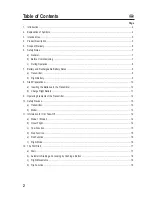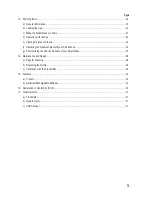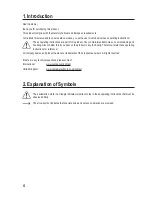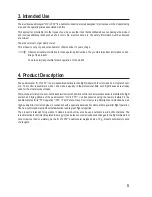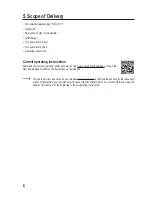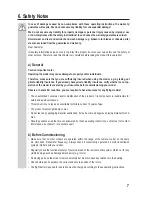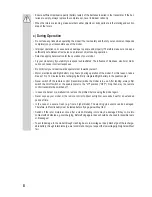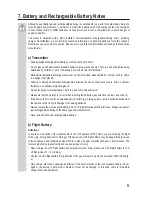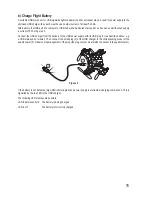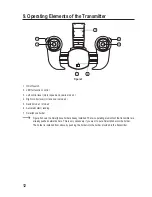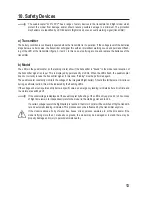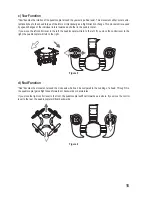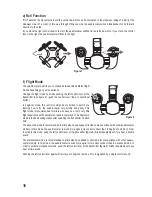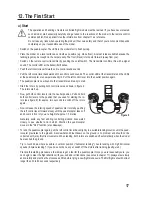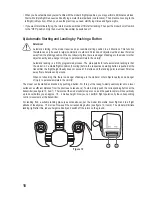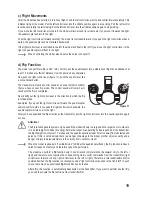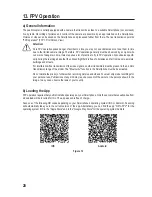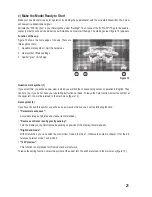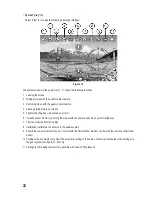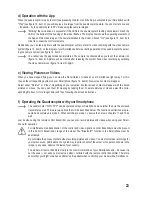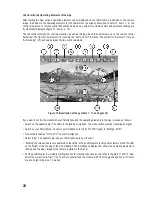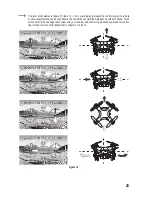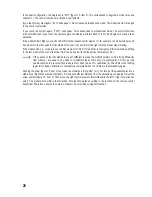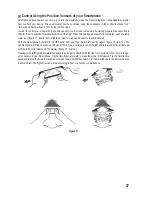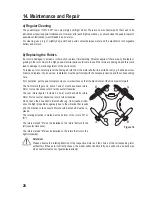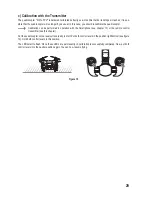
14
11. Information for First Take-Off
a) Mode 1 / Mode 2
The remote control mode specifies which control function is executed with which control element at the transmitter.
The remote control transmitter is configured to mode 2 after activation. However, you can also switch to mode 1.
The explanations on the control functions in mode 2 are presented in these operating instructions.
The difference between mode 1 and mode 2 is in that the motor control function is transferred from the left control
lever to the right control lever when switching from mode 2 to mode 1. The nod control function of the right control
lever switches to the left control lever at the same time. The functions (e.g. forward / backward = nod; climb / drop =
motor control) do not change. The function "Flight mode" remains on the left control lever and the function "Flip" on
the right control lever in mode 1 as well.
If you want to control your quadrocopter in mode 1, you need to push the left switch (figure 3, item 5) at the top of the
transmitter before operating the model and switch on the transmitter while you keep the button pushed. The setting
"Mode 1" is reset to mode 2 after the transmitter is switched off.
b) Hover Flight
For a simpler and consistent explanation of steering, classic terminology is used here as well. This comes
from flight language and is widely used.
Directional descriptions are always to be interpreted from the perspective of a "virtual" pilot in the model.
The two black rotors are considered direction indicators. They mean "front". The explanations are all based
on configuration of the remote control to mode 2 (basic position after activation).
Hovering denotes a flight status in which the quadrocopter neither rises nor falls so that the upwards directed uplift
force is equal to the downwards directed weight.
Push the throttle lever (figure 3, item 3) forward to increase the motor speed and lift up the quadrocopter. Pulling the
throttle lever back causes the quadrocopter to drop. If you leave the throttle lever in the middle position, the quadro-
copter will try to maintain the height via the integrated sensors.
Figure 4
During flight close above the ground and during take-off, turbulence and air flow can be experienced which
may affect the quadrocopter. A quicker response to the controlling motions and slight swerving of the quad-
rocopter forwards, backwards or to the side may result from this. This so-called ground effect is no longer
present starting at a fight height of about 50 cm.


